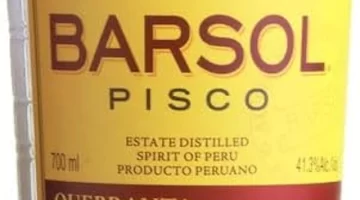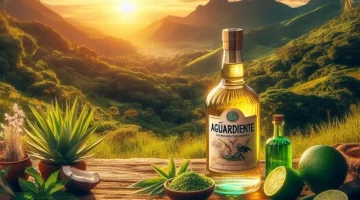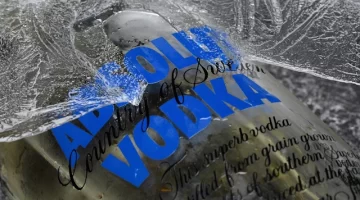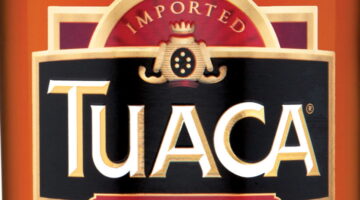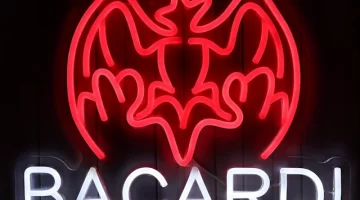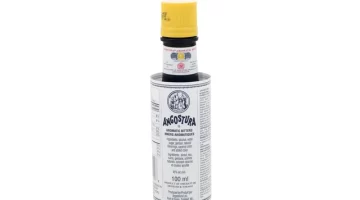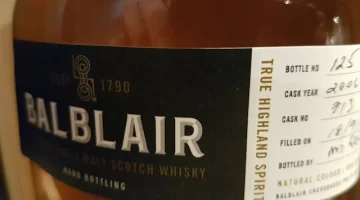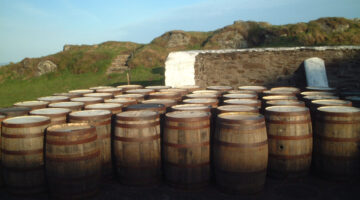What is Absinthe?
Travel Distilled answers the question ‘what is absinthe?’ with a history of the spirit made from the wormwood plant and once thought to be deadly.

What is Absinthe?
Put simply, absinthe is a distilled spirit which is made from several plants, the most famous being wormwood, with fennel another ingredient.
What Does Absinthe Taste Like?
Absinthe has an anise flavor, like the French Pernod or Greek ouzo.

How Strong is Absinthe?
Absinthe is traditionally made stronger than other spirits, which is one of the reasons for its notoriety. None of the ingredients is dangerous or poisonous, but the strength of absinthe means that it packs a punch if you drink a lot of it.
Absinthe is usually at least 45% ABV (90 proof) but can be as high as 85% ABV (170 proof), and usually is nearer the latter than the former. It’s equivalent to drinking a cask-strength spirit.
What Color is Absinthe?

Absinthe is traditionally green, giving it its nickname of the Green Fairy (‘La Fée Vert’ in French). It can also be colorless, though. The green coloring is quite natural and comes from the herbs which go into the spirit. Like a leaf fallen from a tree, it can change color going first to an off-white/yellowy color and then to brown. Some makers also add a little coloring, so you may even see a blue absinthe.
How is Absinthe Made?
Absinthe is distilled like any other spirit. It’s only the special ingredients that give it its distinctive smell and taste.
Where is Absinthe Made?
Absinthe as we know it today was first made in the 18th century in Neuchâtel, a French-speaking region in western Switzerland. It was made famous in the 19th and early 20th-centuries in France, as it became the drink of choice for many artists and writers based in Paris.
Its nickname of the Green Fairy came about partly because of its color but also due to the fact that many of those artists and writers believed that the spirit did indeed contain a spirit, a muse, the Green Fairy. Artists believed they were inspired after drinking absinthe, though it probably simply loosened any inhibitions more quickly than other drinks which were less alcoholic by comparison.
The roots of absinthe, so to speak, may be much older than 18th-century Switzerland, though. Wormwood was used as the base for a medicinal alcoholic drink as long ago as the ancient Greeks and ancient Egyptians.
Is Absinthe a Liqueur?
Because of its strength and color it is often thought that absinthe is a liqueur. It isn’t. Liqueurs generally have sugar added during the manufacturing process, to make them sweeter and more palatable at the end of a meal. Absinthe is a spirit like any other, although it is traditionally served with a sugar cube that is burned and melted into the drink.
What is the Origin of the Word Absinthe?
The word absinthe is Green in origin. Apsinthion is the Greek name for the wormwood plant. In Latin this became absinthium, and as the wormwood plant is the best-known ingredient in the spirit, the French began to refer to it as absinthe.
How Do You Serve Absinthe?

Absinthe can be enjoyed simply neat, on the rocks, or as a cocktail ingredient. The most famous absinthe cocktail is the Sazerac, which originated in New Orleans and combines absinthe with cognac and Peychaud’s Bitters.
There are two other traditional ways of serving absinthe, however. Both involve serving the absinthe in a glass which has a special slotted absinthe spoon balanced across the top. In the spoon is a cube of sugar. In France the tradition is to slowly drip water onto the sugar cube till it fully dissolves. This both dilutes the fierce strength of the absinthe and makes it sweeter.

Elsewhere, notably in the Czech Republic where absinthe is also popular (and spelled absinth without the ‘e’), the spoon and sugar cube are dipped into the absinthe till the cube is saturated with the spirit. The cube is then set alight and, when the flame has died down, stirred into the absinthe. You then also need to add ice or iced water to the drink. Be very careful if trying this serving method because the absinthe, being such a strong spirit, will burn more fiercely.

Why Was Absinthe Banned?
In 1905 a Swiss farmer murdered his family in a drunken rage and then tried to kill himself. It was known that he had been drinking absinthe, and this is what stuck in people’s minds. However, the farmer was a known alcoholic and before the murders he had also been heavily drinking wine and brandy as well as absinthe.
In 1906 both Brazil and Belgium banned the sale of absinthe, followed by the Netherlands in 1909, Switzerland in 1910, the USA in 1912, and France in 1914. Not every country followed suit. Absinthe has never been banned in the UK, for example, or in Spain. Over time the bans were dropped as people realized that absinthe did not have the harmful properties associated with it, although the US ban on the drink was not lifted until 2007.
Buying Absinthe
You can buy a range of absinthes at Master of Malt, with international shipping.
Buying Absinthe
You can buy a range of absinthes at Master of Malt, with international shipping.
